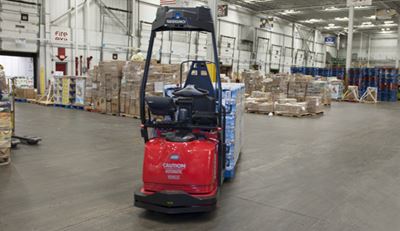Warehouse Best Practices: Optimize Before You Automate

Instead of jumping into automating your warehouse, consider optimizing it first. One of the most beneficial things you can do for your warehouse is to optimize it before you automate it.
Automation can make your warehouse quicker, more consistent and more cost-effective. With a projected 4.6 million U.S. manufacturing jobs to fill by 2028 and a heightened consumer demand to receive products faster, the use (or expanded use) of automated solutions in the warehouse is understandably tempting. However, before moving ahead with the automation process, you’ll need to assess to what extent it makes sense for your workforce and warehouse.
Instead of jumping into automating your warehouse, consider optimizing it first. One of the most beneficial things you can do for your warehouse is to optimize it before you automate it. The data used to optimize can provide valuable insights into what works in your warehouse and what doesn’t while creating more space for product and improving workforce productivity and overall efficiency.
Optimizing your facility
Optimization is critical for any warehouse, but even more so when a facility is looking to automate. Warehouse operations data collected during the optimization process can reveal inefficiencies to guide future decisions about what solutions to implement to solve existing problems. Data reports can offer you detailed information as to what workers are doing, their productivity, the age of your equipment and batteries, and projected business growth.
Telematics solutions, labor management tools, and similar data analysis systems can measure and interpret data collected from your warehouse to establish a baseline efficiency. With the baseline established, you can identify key operating inefficiencies — leading to new opportunities for labor and fleet optimization.
Reassessing the size of your fleet and labor force is another common optimization technique. Often, warehouses make the mistake of having too large of a fleet, but data can help guide changes to fleet size. When you look at the optimization data, you can see which products and workers make the most sense for your needs and projected growth.
Are you building up your warehouse? Maybe a high-capacity forklift is needed. Does your warehouse get overwhelmingly busy during the holiday season? Maybe virtual-reality learning tools can help educate new team members and better prepare them for working in the warehouse. Using the right equipment and measuring your workforce’s needs are just two parts of the process — but these steps can be beneficial down the road when considering automation.
Destination: Automation
After fully vetting your options through optimization, automation can still be a great option to keep pace with business. Automation uses technology to enhance current processes, ultimately reducing labor and operating costs, increasing productivity, and making your warehouse easily scalable. Automated products and solutions can help your warehouse realize its full potential.
However, with any new warehouse solution comes hesitation. A common misconception among warehouse operators is that automation replaces human labor. In fact, automated technology maximizes human activity and potential. Automation allows for labor and warehouse processes to be managed more productively and ensures that the right trucks, pallets, and equipment are used for the right tasks — all enhancing employee and warehouse performance.
Automating your facility can be a long, winding road. Although automation has many benefits, make certain it is the right choice for your operation. To determine what will be best for your warehouse, first turn to optimization. Optimizing your facility can point out inefficiencies that may be fixable without automation, and key data can point to new opportunities in fleet and facility operations.
Submitted by: Stacey Patch and Derrick Miller, The Raymond Corporation
Plant Services, Today's Optimized Facility
Read the original post: https://www.plantservices.com/blogs/todays-optimized-facility/warehouse-best-practices-optimize-before-you-automate/

